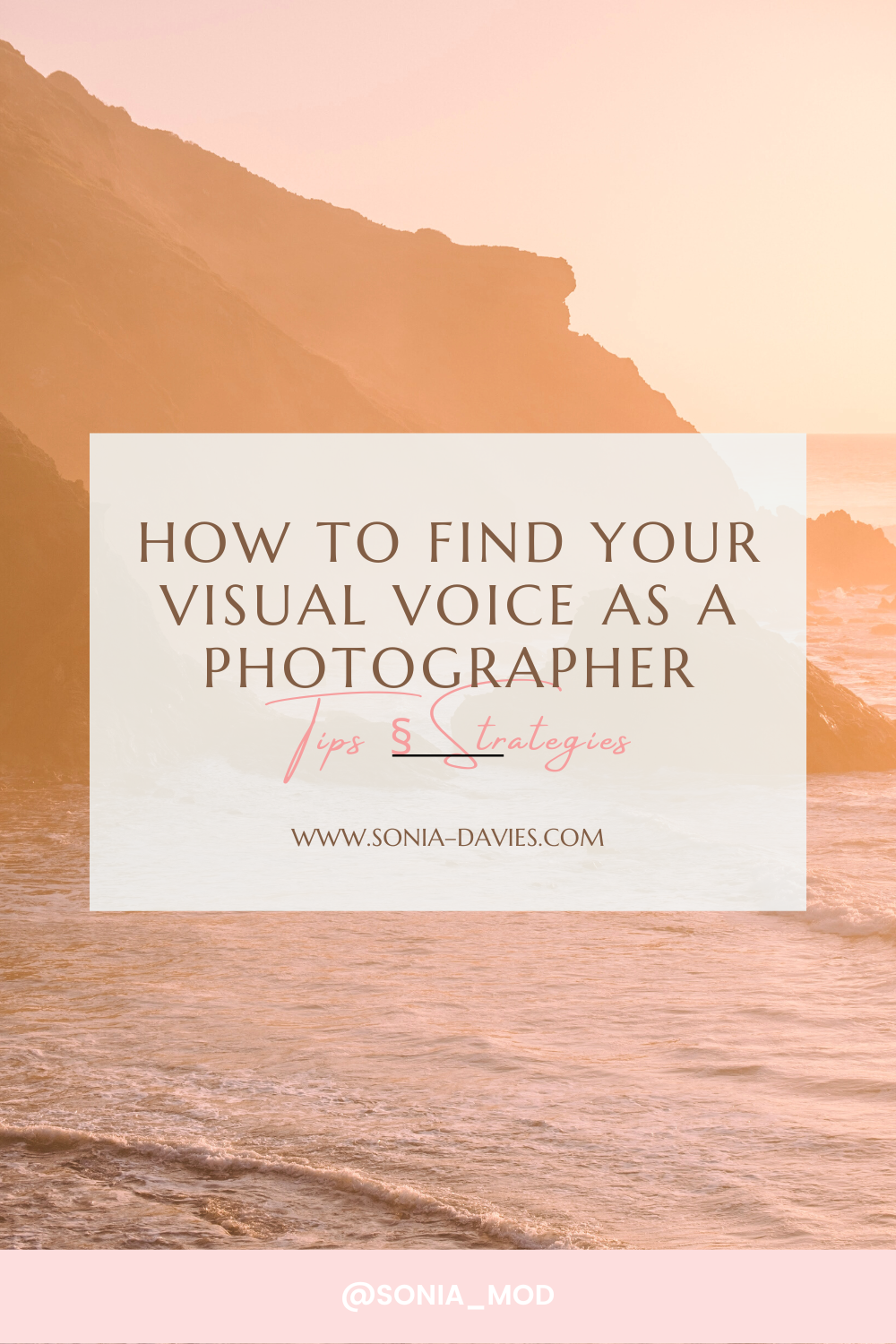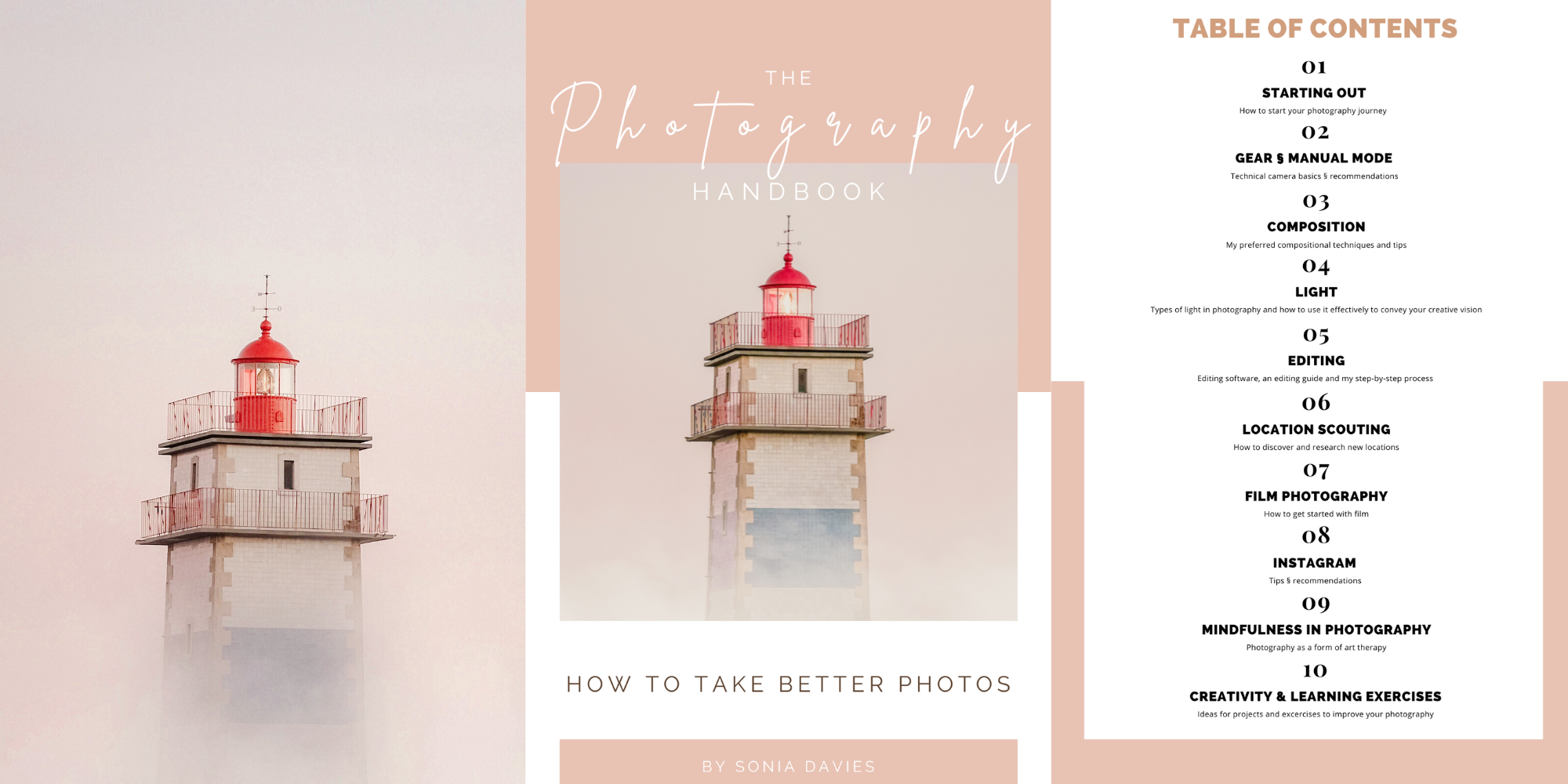How To Find Your Visual Voice As A Photographer
tips and strategies that can help enhance the process of finding your visual voice as a photographer
*This post is an extension of “The Photography Guide” Ebook
We all want to feel like we “fit in”. Wanting to be accepted and loved by other people is our human nature. But when it comes to photography, we produce our best work when we find a unique style that is true to our character and creativity.
The process of finding your visual voice is like discovering your superpower. Your visual voice sets you apart and makes your work distinctive, interesting, desired by others and worthy of discourse. But you can’t copy others; that won’t work. Instead, be inspired by others and listen to your heart. So how do you find your visual voice?
1. Keep Shooting Photos Consistently
There is nothing more important in your creative path to finding your visual voice than shooting consistently. Ideally, every day, but if that’s not possible, just do it as often as possible. The essence of photography is learning how to notice, and this only comes with practice and shooting consistently. The better you are at noticing interesting scenes around you, the better you will be at capturing them too.
It doesn’t matter what camera you have or if you only have a phone. Just make sure to bring something everywhere you go. If you don’t have a phone with you, use your eyes and take pictures in your mind. When I first got into photography, it was so intoxicating that wherever I went, my eyes were ‘snapping’ pictures 24/7.
You can have the latest high-end camera on the market, but your photos won’t make anyone feel anything if you don’t know how to notice the little moments of beauty around you.
(Here is my current GEAR list, but I started with THIS, THIS, and THIS)
2. Focus on Building Skills
Building skills is an essential element of a visual voice. With greater skills, you’ll create more visually complex work and find it easier to translate your ideas or emotions through photography.
How do you build your skills? Begin, learn, practice, practice some more, keep showing up even when you don’t want to, learn some more new things, stretch yourself, practice, practice, note your improvements, learn again, practice more, repeat.
Of course, having skill doesn’t mean you won’t ever make a bad photo. Experimentation and failure are part of the creative process for everyone. When I am out shooting, I often times end up with no good photos, which can be frustrating. Other times, all the elements align so well that I feel half of the photos I took are pretty good, which is an amazing feeling. The creative process is a constant ebb and flow, which is entirely normal.
If you are in a phase of your photography now where you’re looking to learn and build new skills, I created The Photography Guide - a workbook covering light, composition, editing, location scouting, Instagram and many more lessons I’ve learned along the way in the last ten years of my photography journey.
I also have a few detailed blog posts that you might find interesting on this subject, THIS and THIS.
3. Consider Your Subject Matter
For most photographers, the subject matter is the defining marker of their visual voice. What we choose to make a critical part of our expression of our truth is what we personally find beautiful or repulsive, interesting or meaningful. The subject matter can be landscape, people, objects, and so on, but it's more than that. It's about our personal experiences in life and what surrounds us and influences us.
Our education, native country, adopted home, political affiliation, sexual or gender identity, culture, religion, race, ethnicity, and sense of privilege (or lack of). Our choice of subject matter is influenced by our sense of morality, our values, and our ideas about what is right and wrong. It’s influenced by what we find beautiful or fascinating or even repulsive. The combination of all these things is unique to each of us and, therefore, the basis for defining our visual voice.
4. Read Photo Books
The more photos you see, the better you are as a photographer. Looking at photo books is one of the best investments you can make. It’s better than scrolling on Instagram, buying a new lens, and sending another pitch email. It will nurture your creativity.
Let the great masters teach you. Analyse their work. Spend time looking at individual images and how their sequence tells a story. Look at the composition and ask why it makes you feel a certain way. Then figure out how they did it.
My favourite photo books are Ansel Adams, Sebastiao Salgado, National Geographic, Slim Arons, Jimmy Chin, and Accidentally Wes Anderson.
5. Mimic
The road to artistic growth starts with mimicry because that’s how humans learn best. So when looking at the work of great masters and photographers that inspire you, taking notes about work that moves you, use those notes to practice and advance your own work. The point of mimicry is not to become a copy of the photographer you admire but to use it as a tool to discover the photographer you want to be.
6. Be Consistent
A vital component of a photographer’s visual voice is consistency. Consistency is another way of saying that you repeat elements within your works: similar subjects and elements like light, composition, storytelling and editing. As such, your work is identifiably yours. Essentially, your work’s consistency is your voice’s ultimate expression.
7. Refill Your Cup
Make sure to do things outside of photography that make you happy and replenishes your well of creativity. Whether that’s running, drawing, gardening, museums, cooking or spending time with loved ones. All of it will infuse your photography.
This is something I struggle with personally. I get so caught up in work that I end up living in my own head. Being mindful to know when to stop and switch the activities into something that replenishes me is something I am actively trying to focus on on a daily basis.
Remember, finding your visual voice as a photographer is a long and ongoing process. In fact, you won’t ever finish discovering, which is part of the fun. So don’t waste time, go outside and start shooting, learning, practising and enjoying the process.
If you haven’t done so already, go and check out the Photography Mini Guide, where we discuss practical exercises and steps to take in order to find your style and photography direction.
As always, I would love to hear your opinion on this subject in the comments below.







